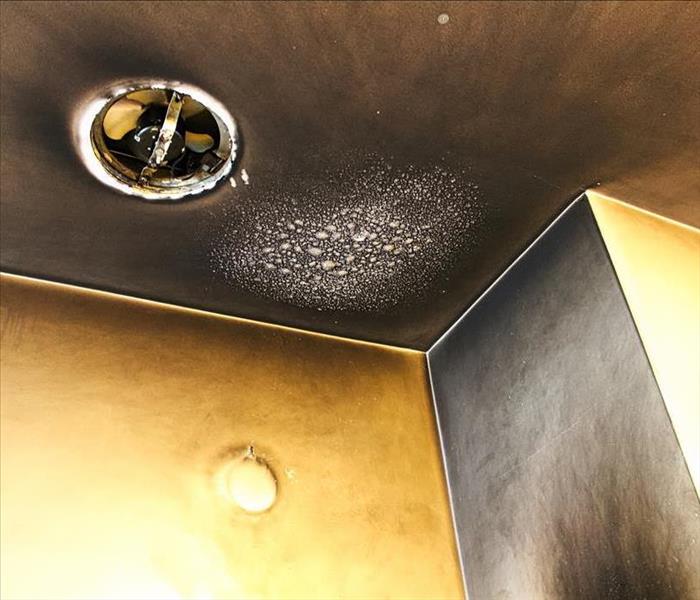Can I Repaint Directly Onto Burnt Surfaces?
6/19/2020 (Permalink)
 You can contact our professionals 24/7. Our fire damage experts are trained in fire & smoke restoration, odor control, upholstery and fabric cleaning.
You can contact our professionals 24/7. Our fire damage experts are trained in fire & smoke restoration, odor control, upholstery and fabric cleaning.
SERVPRO Can Clean and Deodorize Surfaces Before Repainting to Ensure your Daytona Home Undergoes Successful Fire Restoration.
Do I need professional fire restoration for a residential property?
Enlisting professional technicians' assistance for the recovery of your Daytona home can lower your claim's overall cost. It is much more cost-efficient to restore items rather than replace them. As a homeowner, smoke residues can be devastating when they affect sentimental items or furnishings that have been collected over a lifetime. Our technicians can work closely with your adjuster to return these items to a preloss condition using a combination of chemical, mechanical, and deodorant cleaning. We can perform these vital tasks efficiently and prepare your walls, contents, and ceilings for repainting. Instead of discarding burnt items, our technicians can recover upholstery, refinishing surfaces, and restore wooden materials, resulting in fewer losses and a closer connection to your home's preloss condition.
What are the basic principles of fire recovery?
When performing fire restoration in your Daytona home, it is essential that you abide by the basic principles of loss recovery. The stress of a fire in your home can affect your planning for restoration as well as becoming a massive inconvenience to your everyday life. SERVPRO technicians are experts in locating smokes, assessing different types of residue, and the surfaces they affect before moving on to capture residues and dispose of them. We aim to minimize disruption allowing you to concentrate on your everyday life. All of our work is recorded throughout the restoration to provide you with both transparency and accountability. We can pass on this information to your insurer to help complete your 'stress-free claim.'
What are the core methods for smoke cleaning surfaces?
- Temperature
- Chemical Action
- Time
How do I remove smoke from counter-tops?
The type of smoke residue that is likely to be found on counter-tops and other horizontal surfaces are dry smokes. Hot air rises, which means the most challenging to remove residues are likely to be located on upper walls and ceilings where smoke soils bond with the paintwork or fixtures. Horizontal surfaces can sustain damage when fires cool, and soots or ash drop onto the counter-top. SERVPRO recommends that you cover surfaces with cloths or sheets immediately after a fire to prevent falling soots from causing damage. Dry soots or ash deposits do not typically bond with counter-tops, which is why it is essential that you do not introduce moisture to the affected area. Water and agitation can lead to dry smoke residues being forced into surfaces and causing further harm. Fire and smoke restoration technicians (FSRT) apply dry cleaning and light vacuuming to surfaces before inspecting and considering water-based cleaning agents.
How do I tell what items are salvageable after a fire?
There are no defined procedures for restoring contents in a fire, so it can be a challenge to decide which items to repair and which to discard. We use multiple methods of agitation, applications of temperature, or cleaning products and machinery to get rid of smoke residues. It is not uncommon for our technicians to return to a particular area or item in your home with different equipment to restore. However, not all items are salvageable. Once all restoration options are exhausted, our technicians may have to declare an item unsalvageable. We can remove the offending item and dispose of it as part of the restoration service.
What gets rid of stubborn soots?
- Mechanical Equipment including rotary machines, hot water extraction, and air whips
- Lubrication which can be the introduction of oil-based cleaners to grease surfaces and remove animal proteins or fuel
- Chemical Cleaning Agents with water or oil-based composite
- Suspending Elements in Solvents which may require dwell time and can be effective at removing bonded soots from surfaces
Which cleaners should I use to remove soot residues?
The central tenet of removing soot residues is to remember that like dissolves like. A smoke residue that is water-based responds to cleaning solutions mixed in water. These may include soots from a natural material like wood or drywall. Some wastes, on the other hand, have an oil-based composite. These residues can be the result of synthetic materials burning or animal fats in a grease or kitchen fire. Introducing water to these residues does not mix and can lead to spreading residues further across a surface. Before applying any cleaning chemicals, we must first understand the type of residue to avoid further damage. These methods apply to the alkaline or acidic nature of residues and must be tested before introducing cleaners. SERVPRO technicians check surfaces before resorting to chemical action so that we can tailor an efficient restoration solution.
Removing soots and smoke residues can be tricky without the correct training. For expert restoration, contact SERVPRO of North Daytona Beach / Ormond Beach at (386) 677-9993.






 24/7 Emergency Service
24/7 Emergency Service